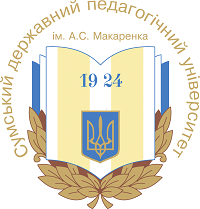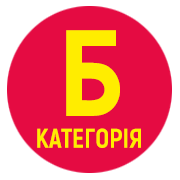FEATURES OF ASSESSING SPECIAL PREPAREDNESS INDICATORS OF 14–15 YEAR-OLD FOOTBALL PLAYERS
DOI:
https://doi.org/10.32782/olimpspu/2025.2.22Keywords:
football players, training, technical preparation, physical preparedness, neurodynamic indicators, tests, individualizationAbstract
This article examines the features of assessing special preparedness indicators in 14–15-year-old football players based on comprehensive testing of physical, technical, and neurodynamic functions. The aim of the study was to evaluate the level of special preparedness of young footballers using groups of test methods adapted to the current requirements of the training process. A set of tests was applied, including a 20-meter sprint, Beep-Test, plyometric test, coordination exercises, various ball control drills, shooting accuracy, passing accuracy, as well as neurodynamic indicators assessed using the “Diagnost-1M” computer system. The selection of control tests was based on a thorough analysis of modern scientific sources, current trends in the work of advanced football academies, and the practical experience of coaches under present-day conditions.The results showed that the levels of physical and technical preparedness correspond to average normative values for this age group; however, neurodynamic indicators reveal additional possibilities for individualizing the training process and enhancing athletes’ adaptive capabilities. The authors emphasize the importance of a comprehensive approach to assessing preparedness, which considers not only traditional running, jumping, shooting, and passing tests but also their modifications that reflect the specifics of a football player’s game activities. These include short sprints, direction changes, technical actions following physical loads, plyometric tests, and manifestations of neurodynamic functions. Particular importance in the training of young football players is given to neurodynamic indicators such as functional mobility and strength of nervous processes, as well as sensorimotor reactivity.The proposed methods can be used by coaches to optimize the training process and develop the reserve pool of Ukrainian football, which is of significant importance for increasing competitiveness at the international level.
References
Воронова В. Психологія спорту : навчальний посібник. Київ : Олімпійська література, 2017. 272 с.
Захарчук С.П., Тищенко В.О., Синиця А.В., Конох А.А. Підвищення фізичної підготовленості футболістів інноваційними засобами. Фізичне виховання та спорт. 2024. № 1. С. 55-60.
Оцінювання психофізіологічних станів у спорті / Г. Коробейніков та ін. Львів : ЛДУФК, 2013. 219 с.
Латишев М., Квасниця О., Квасниця І., Спесивих О. Прогнозування: методи, критерії та спортивний результат. Спортивний вісник Придніпров’я. 2019. № 1. С. 39-48.
Лизогуб В.С., Пустовалов В.О., Супрунович В.О., Гречуха С.В. Сучасні підходи до реалізації відбору футболістів високої кваліфікації за показниками нейродинамічних властивостей вищих відділів центральної нервової системи. Слобожанський науково-спортивний вісник. 2017. № 2. С. 81-85.
Мигаль М., Максименко Л. Техніко-тактична підготовка сучасних футболістів на етапі спеціалізованої базової підготовки. Інноваційні і цифрові технології у процесі підготовки спортсменів в умовах формального і неформального навчання : матеріали ІІ Міжнар. наук.-практ. конф., 5 жовтня 2022 р. Суми : СумДПУ імені А.С. Макаренка, 2022. С. 91-92.
Платонов В. Сучасна система спортивного тренування : підручник. Київ : Перша друкарня, 2021. 672 c.
Саутов Р.Т., Тищенко В.О. Інтегрована методика тренування для розвитку технічних і тактичних навичок футболістів на етапі попередньої базової підготовки. Науковий часопис Українського державного університету імені Михайла Драгоманова. Серія “Науково-педагогічні проблеми фізичної культури (фізична культура і спорт)”. 2024. № 12(185). С. 169-175.
Emmonds S., Till K., Weaving D. Youth Sport Participation Trends Across Europe : Implications for Policy and Practice. Res. q. Exerc. Sport. 2023. Vol. 25. P. 69-80. DOI: 10.1080/02701367.2022.2148623.
Comfort P., Stewart A., Bloom L., Clarkson B. Relationships between strength, sprint, and jump performance in well-trained youth soccer players. J. Strength Cond. Res. 2014. № 28. P. 173-177.
Tomáš M., František Z., Lucia M., Jaroslav T. Profile, correlation and structure of speed in youth elite soccer players. J. Hum. Kinet. 2014. Vol. 40. P. 149-159. DOI: 10.2478/hukin-2014-0017.
Lockie R.G., Schultz A.B., Callaghan S.J., Jeffriess M.D., Berry S.P. Reliability and validity of a new test of change-of-direction speed for field-based sports: the change-ofdirection and acceleration test (CODAT). Journal of Sports Science & Medicine. 2018. Vol. 12. № 1. P. 88-94.
Downloads
Published
Issue
Section
License

This work is licensed under a Creative Commons Attribution-NonCommercial 4.0 International License.







